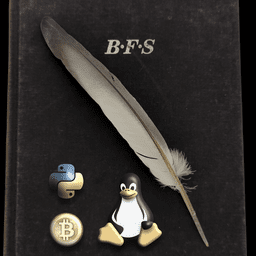Memorizing Seed Words With Pen and Paper
I have two goals for this article.
Show how you can easily memorize a 12 or 24 seed word using only pen and paper. Total practice time should take less than 20 minutes if done right. If this is all you are interested in, skip ahead to the Method section below.
Demonstrate some general principles of learning that you can apply to almost any skill. My approach is based on a field called Precision Teaching, which is applicable to more than just memorization. I have put some articles at the bottom if you would like to learn more.
Some General Principles of Learning
Spaced practice. Daily practice should be less than 5 minutes. Cramming is inefficient and results in poor retention.
Training in chunks. It is much easier to learn if you break down your learning target into smaller unit. Chunk size is the variable that I have manipulated in the experiments below.
Fluency. Aim for accuracy plus speed – not just accuracy. A person that knows all the words in, say, French is not fluent in French if he can only speak 1 word per minute. In this case, accuracy is perfect, but fluency is abysmal. Here I will define seed word fluency as being able to accurately remember a seed phrase at the same speed as you are able to read it. This will be measured as words per minute (always 24 / minutes).
Proportional growth. If the teaching method is held constant, fluency will grow at a constant proportional rate. Change in proportional growth is a better gauge of learning than mere repetition or time spent. It doesn’t matter whether you are dealing with a cognitive or motor skill. An easy way to visually analyze changes in proportional growth is to plot the data using a logarithmic y-axis.
Method
I wanted to achieve the highest level of fluency (words per minute) with the least amount of practice time. The method also had to be simple enough to easily be done with pen and paper. The following method allowed me to memorize a seed in less than 15 minutes of practice. This was achieved by breaking up the seed into smaller chunks, like this:
https://drviklund.com/nostr/seed_example.png
Instructions. Cover up all words with a paper and move it to the right, revealing one chunk of 4 words each time. Work with groups of 8 words at the time, as indicated by the vertical lines. Try saying the next 4 words before revealing them. If you can’t, reveal them anyway by moving the paper, say them, and then cover up all words in the group of 8 again. You will likely have to move the paper back and fourth a lot during the first practice round. Only do 3 trials a day, not more – cramming is a waste of time. One trial means that you have worked with each group of 8 until you have recalled the words just once when covered up by the paper. The first trial should take less than 3 minutes if done right. Fluency will grow proportionally from that. You want to be able to remember the words at least as fast as you are able to read them. Focus on accuracy first however, and let the speed come naturally as remembering begin to require less effort.
Experiments
I carried out three experiments that show how training with smaller chunks allows for fluency to develop with less effort. In each experiment, two new seeds were memorized. One seed was always memorized using the method above as a baseline, while the other was memorized using larger chunks. Each experiment ran for a total of 9 days.
Experiment 1
https://drviklund.com/nostr/exp1.png
Experiment 2
https://drviklund.com/nostr/exp2.png
Experiment 3
This was a hybrid where I trained with the same seed using differently sized chunks every three days. For the first three, I trained exactly the same as with the baseline method. Then for another three days, I used the chunk size shown in experiment 2. Finally, with no vertical boarders so that a single mistake would require me to redo the entire seed.
Results
Below are the daily means of 3 trials per day. Black dots is always the same method, where I work with the words in chunks of 4 and groups of 8. Red shows the comparison. The baseline method was clearly superior.
https://drviklund.com/nostr/chart.png
Here are the same results summarized in a table.
https://drviklund.com/nostr/table.png
Retention
You will need to rehearse your seed occasionally. Rehearsing every day is unnecessary. Once or twice a month is more than enough. An even better strategy is to base the decision on when, and how much, to rehearse based on your level of fluency. Simply wait a while and then train your fluency to the same level as before. It will become easier every time, and you will be able to wait longer and longer between rehearsals.
Wrapping Up
You can achieve something with very little effort if you have a low time preference. This method is “slow” in the sense that you can’t cram everything in a day. It’s “fast” in the sense that fluency can be obtained with less than 20 of minutes practice. Retention also needs to be taken into account, but that should only take a few extra minutes every month if done right. You don’t have to measure everything like I did. Fluency is something that you can feel developing. Simply ask if you were able to remember the words roughly as fast as you are able to read them.
Links for learning more about Precision Teaching

